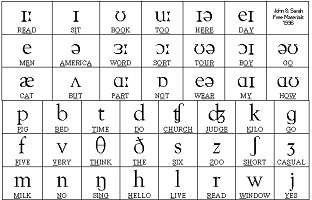Syllable division rules in English
Syllables and Rules for dividing
The syllable is a phonetic element of the language. We can talk about the importance of syllables for oral speech, while they do not participate in semantic word-formation. Therefore, the syllable is also called a pronunciation unit. In this article, we will describe the Syllables and Rules for dividing them into syllables in English. In in this article we will discuss Syllable division rules in English
The role of syllable division in language
- Formation of transfer norms. In order to competently transfer a word from one line to another, you need to be able to divide it into parts according to the rules of syllable division.
- The criteria by which tokens can be divided. Syllables in English can be distinguished based on morphology, phonetics, or spelling. There is no single standard in this regard.
- Language evolution. Language is a living system that is constantly changing, and changes can lead to the emergence of new rules for division into syllables.
Rules for dividing into syllables in English.
It is not enough to know the rules of syllables in English: you also need to know which of them should be addressed in a given situation. To read an English word correctly, you must:
- It is correct to put stress in the word. This is important because the pronunciation of a sound depends on whether it is struck or unstressed.
- Determine what type of syllable you are dealing with. There are four types of syllables in English – two basic and two conventional. The same letter in closed and open syllables will be read differently.
Here are the basics to help you correctly divide the English word into syllables:
- There is a rule that makes it easy to understand how many syllables are in a given word. There will be as many syllables in any English word as there are vowels. For example, we will divide the word music into syllables like this: mu-sic. Moreover, each syllable will have one vowel sound. You can make a mistake by paying attention not to sounds, but to letters. Look at the word take: it has two vowels, but only one sound, respectively, this word will be monosyllabic.
- It is important to understand that there may be no vowels in the English syllable at all. A sonorant consonant can also become a syllabic sound. These sounds that are pronounced “nose-in” are [m], [n], [l], [w], [r] and [j]. For example, the word mild consists of two syllables, although it has only one vowel.
- Note also that the consonant at the junction of the syllables refers to the second syllable. See how the division into syllables occurs in this word: pu-pil.
- One of the features of syllabic definition concerns the consonant l. We are talking about words in which several co-ordinates stand nearby, one of which is l. In this case, l will go to the second syllable, moreover, together with the letter that stands next to it. For example ta-ble.
- In a special way, English lexemes are divided into syllables, in which three or more consonants stand one after another. In this case, one of them will go to the first syllable, which will become closed: lit-tle, cen-tre.
- Combinations of letters such as ld and nd in English form a separate syllable. Accordingly, the syllabic division is as follows: mi-ld, fi-nd.
- Remember: you need to start dividing a word into syllables from the end. Usually, the border between syllables is between the vowel and the consonant, from which a new syllable begins.
- Pay special attention to words with zero sounds. If the letter is not pronounced, accordingly, it will not be displayed in the transcription and will not affect the syllabus in any way.
- If a word has a doubled consonant or a combination of consonants that are not pronounced as one sound, they can go to different syllables.
- Syllables in English can be identical to prefixes and suffixes.
- Words with the ending -ed can be divided into syllables in different ways. It can act as a syllable if the vowel “e” is pronounced. If it gives a zero sound, the ending cannot be distinguished as a syllable.
- In this case, the ending -ing is always a separate syllable.
And the last rule: if a word consists of two parts, between which there is a hyphen, each of these parts should be divided into syllables independently of the other.
We hope after reading this article you are able to understand Syllable division rules.
